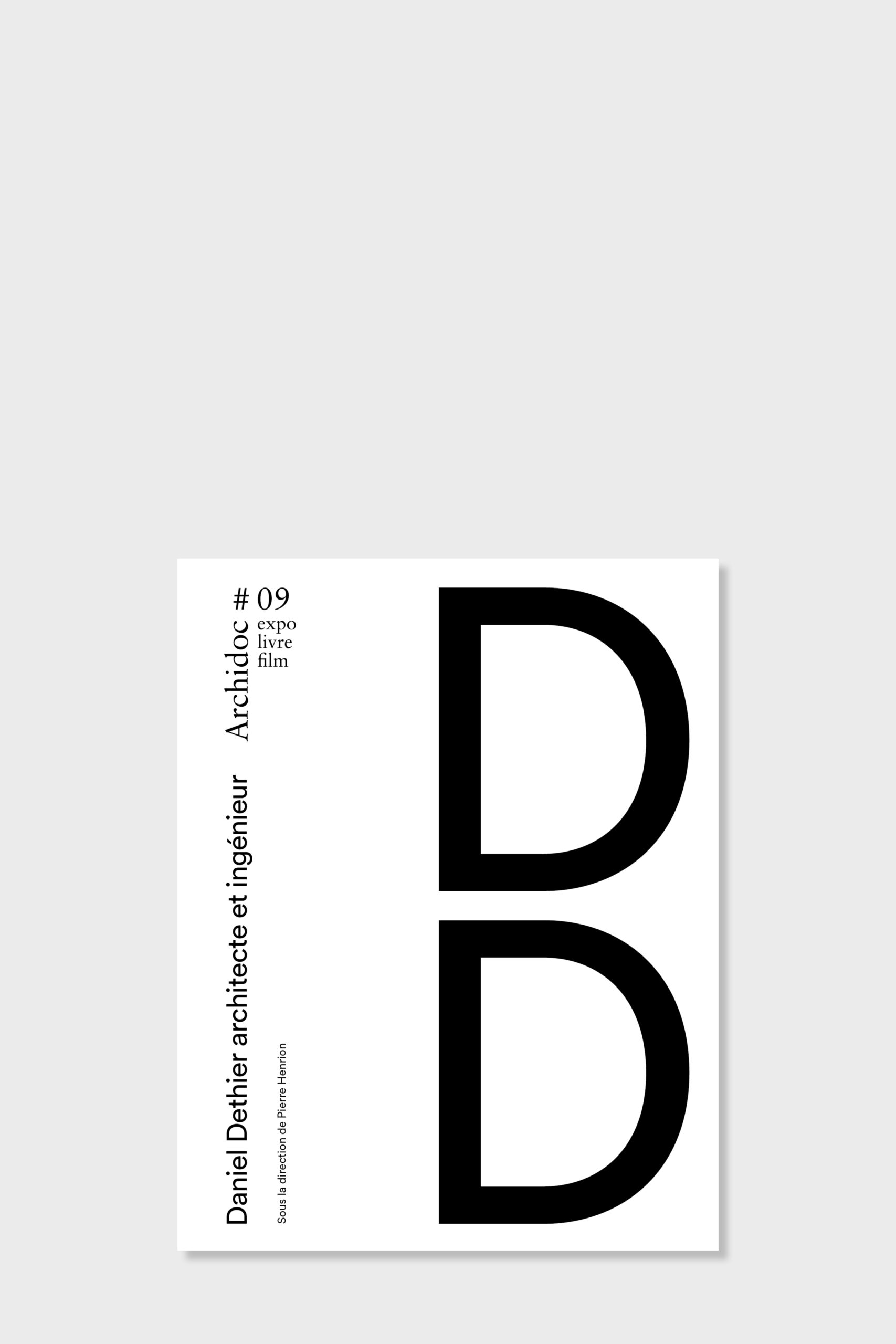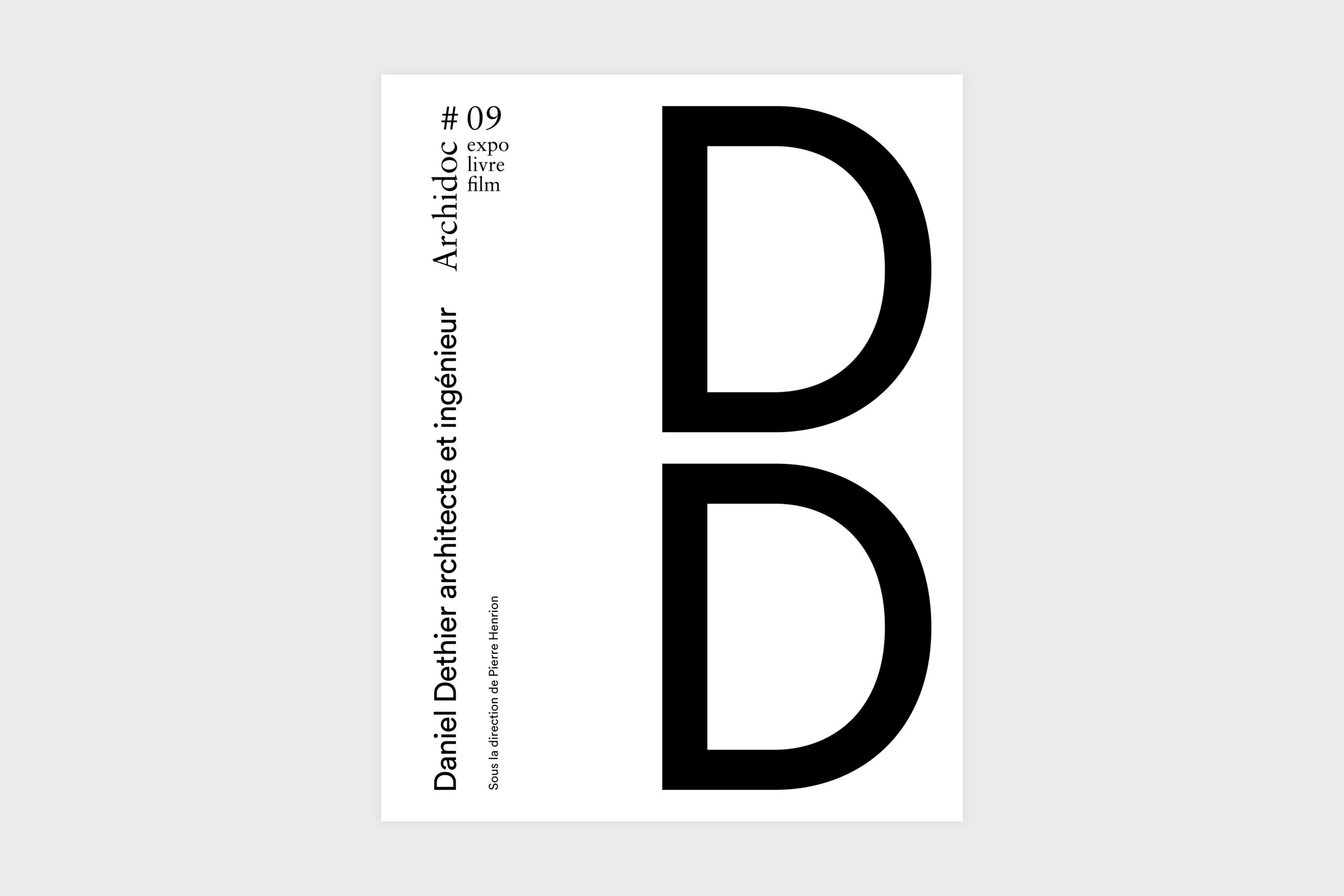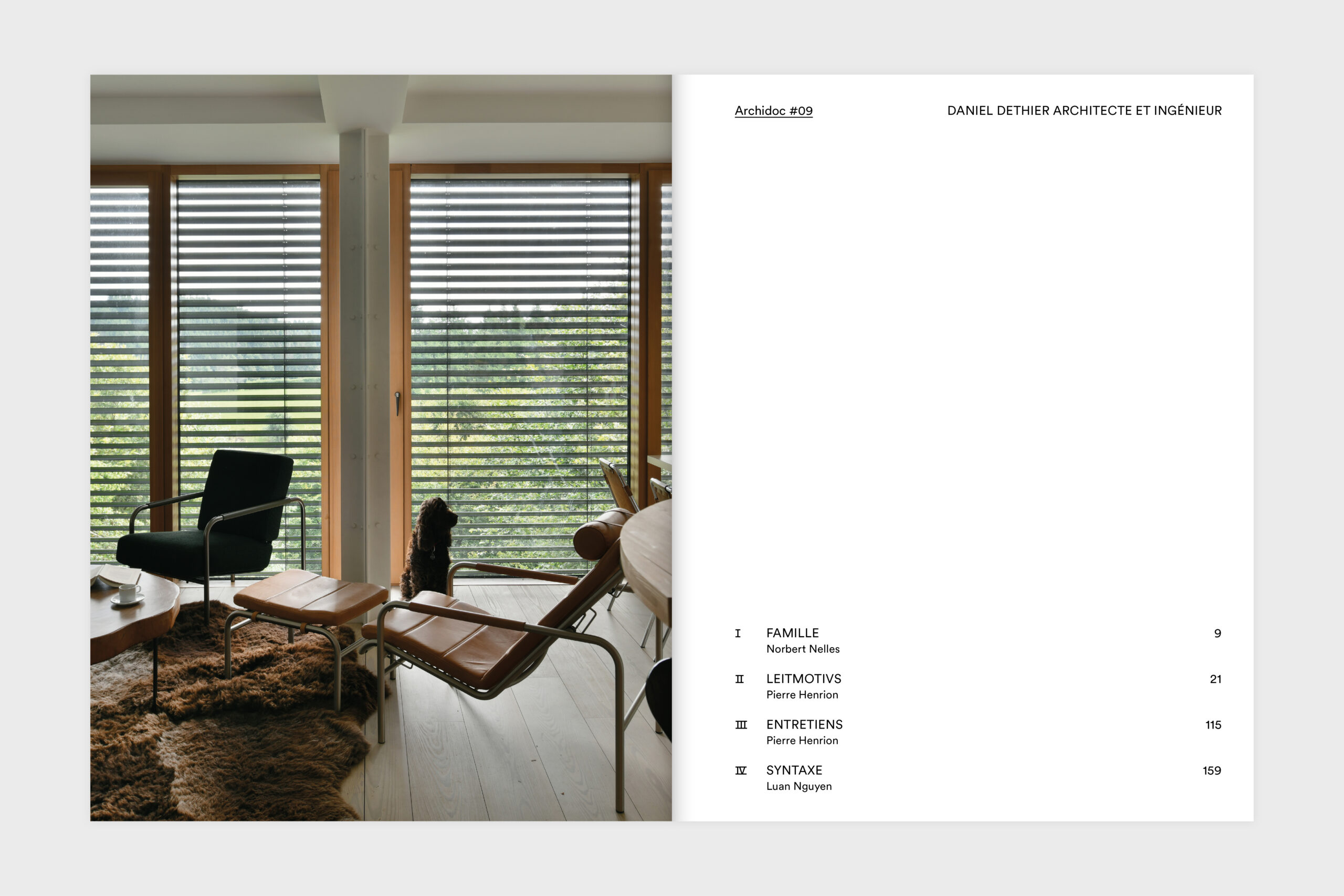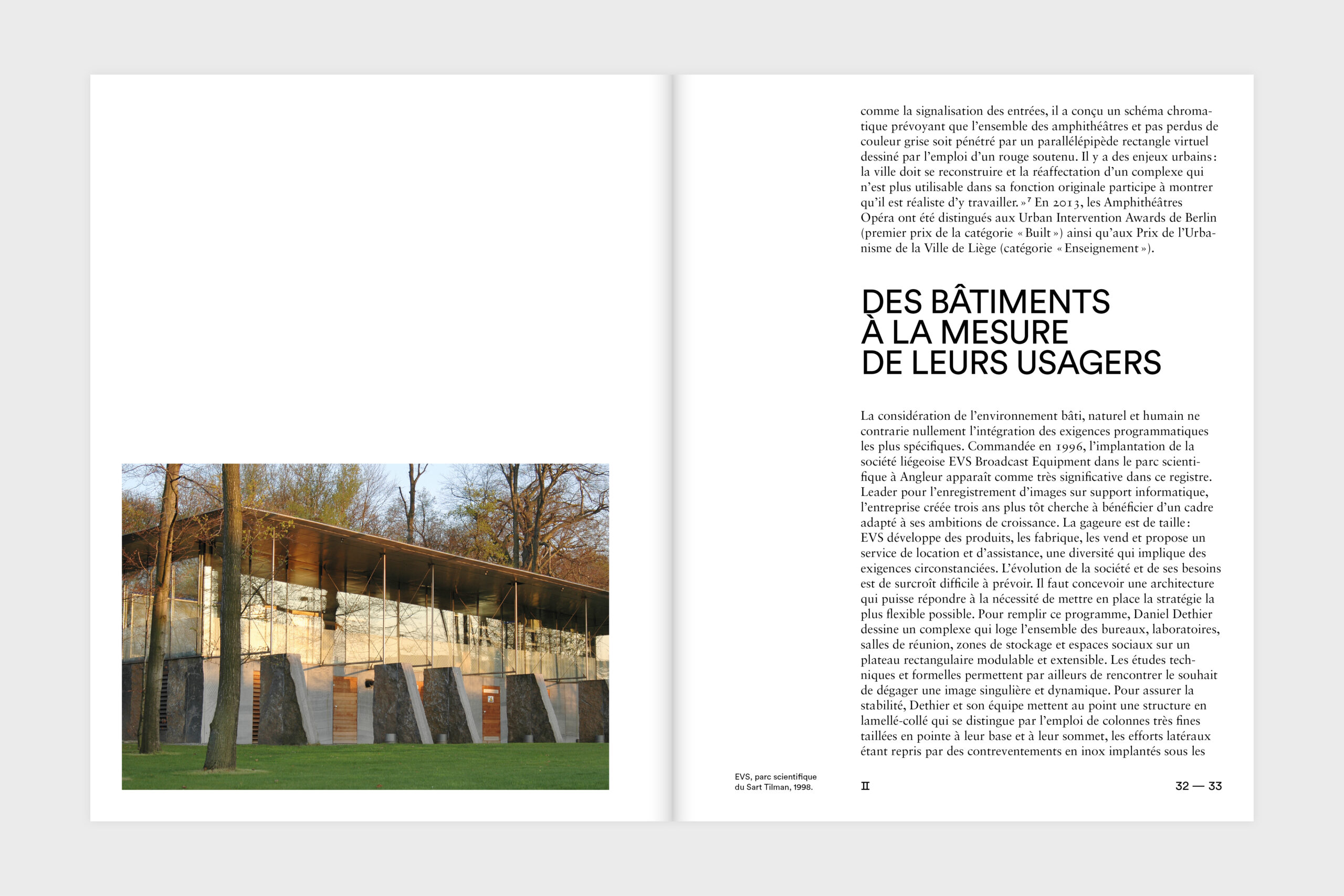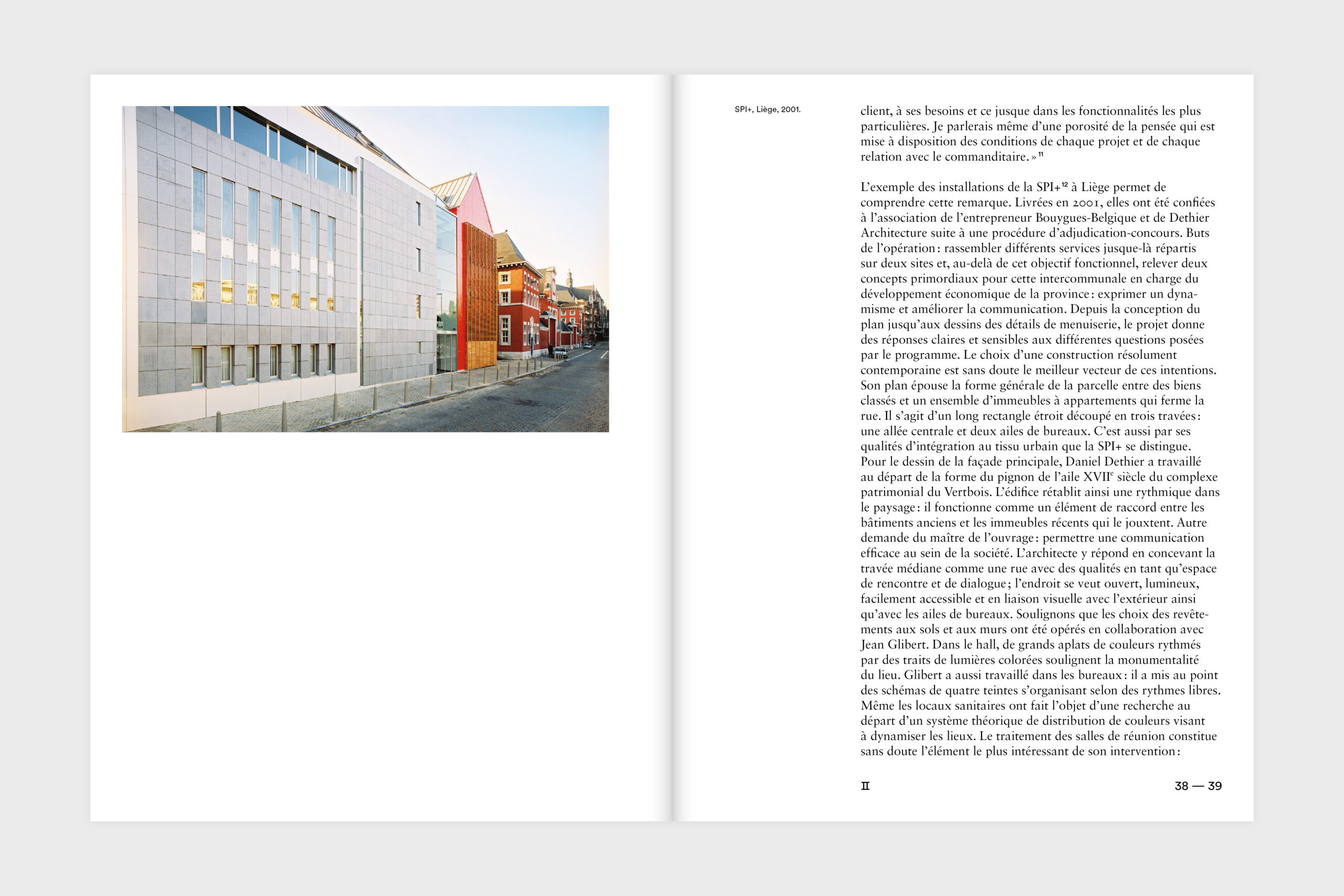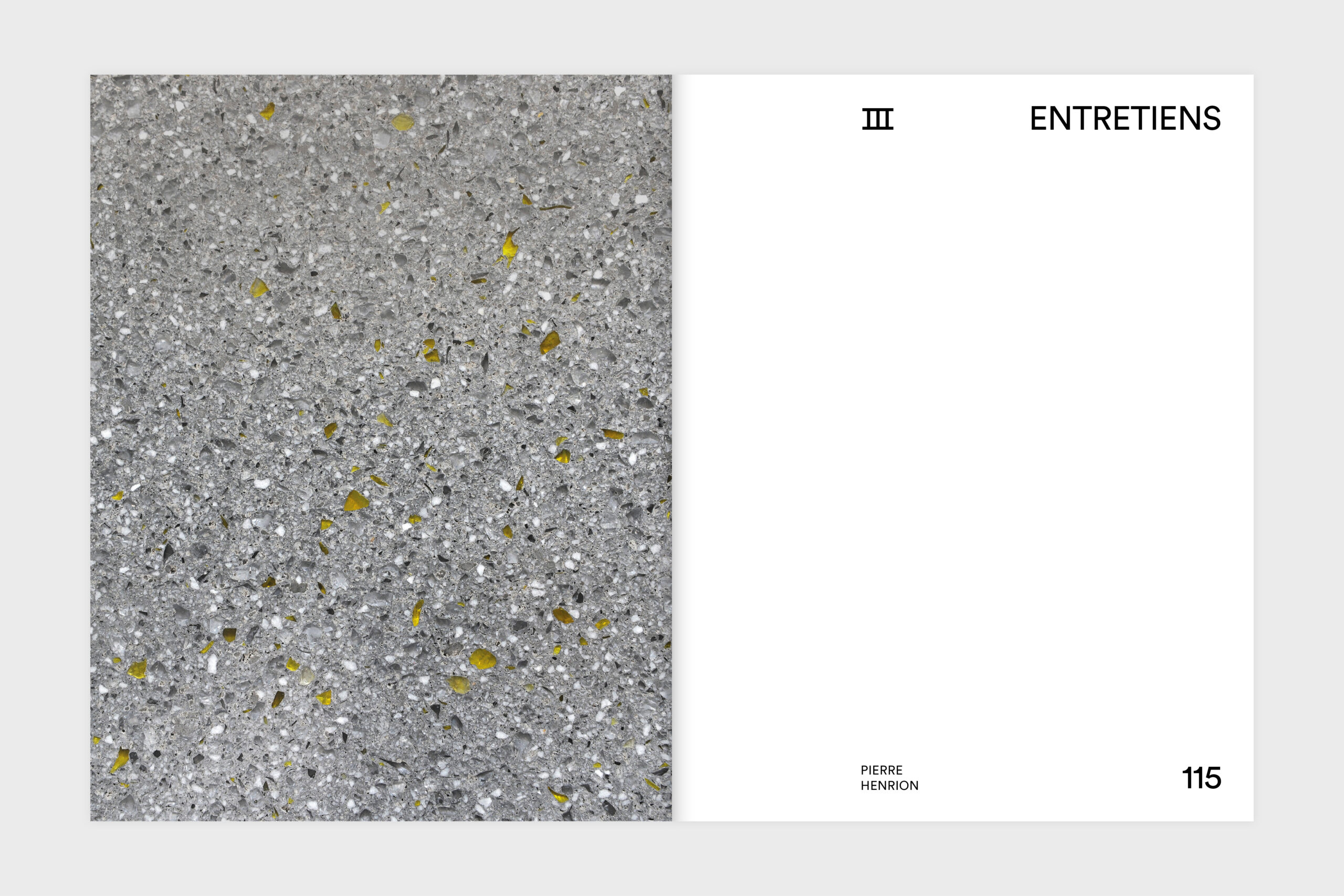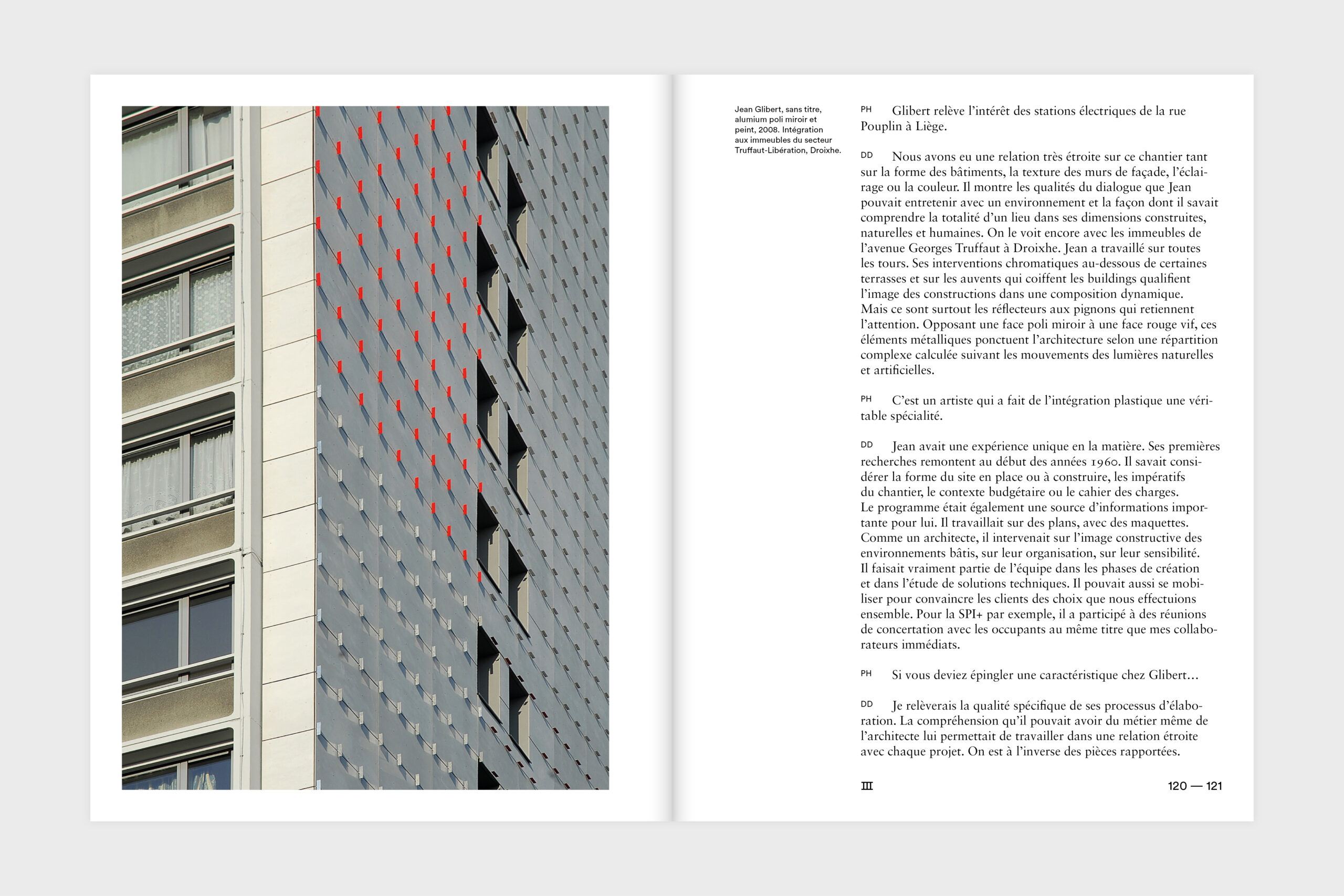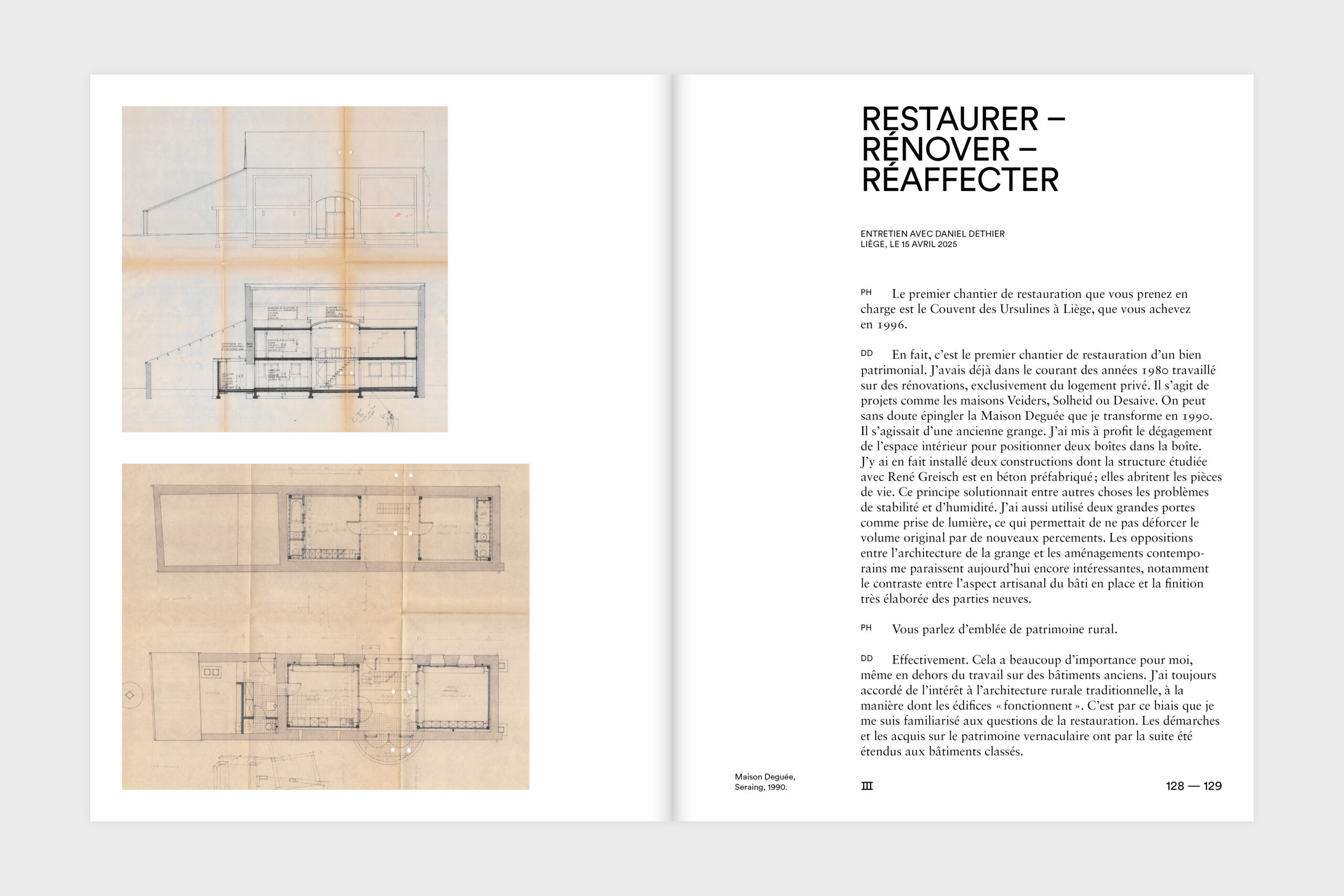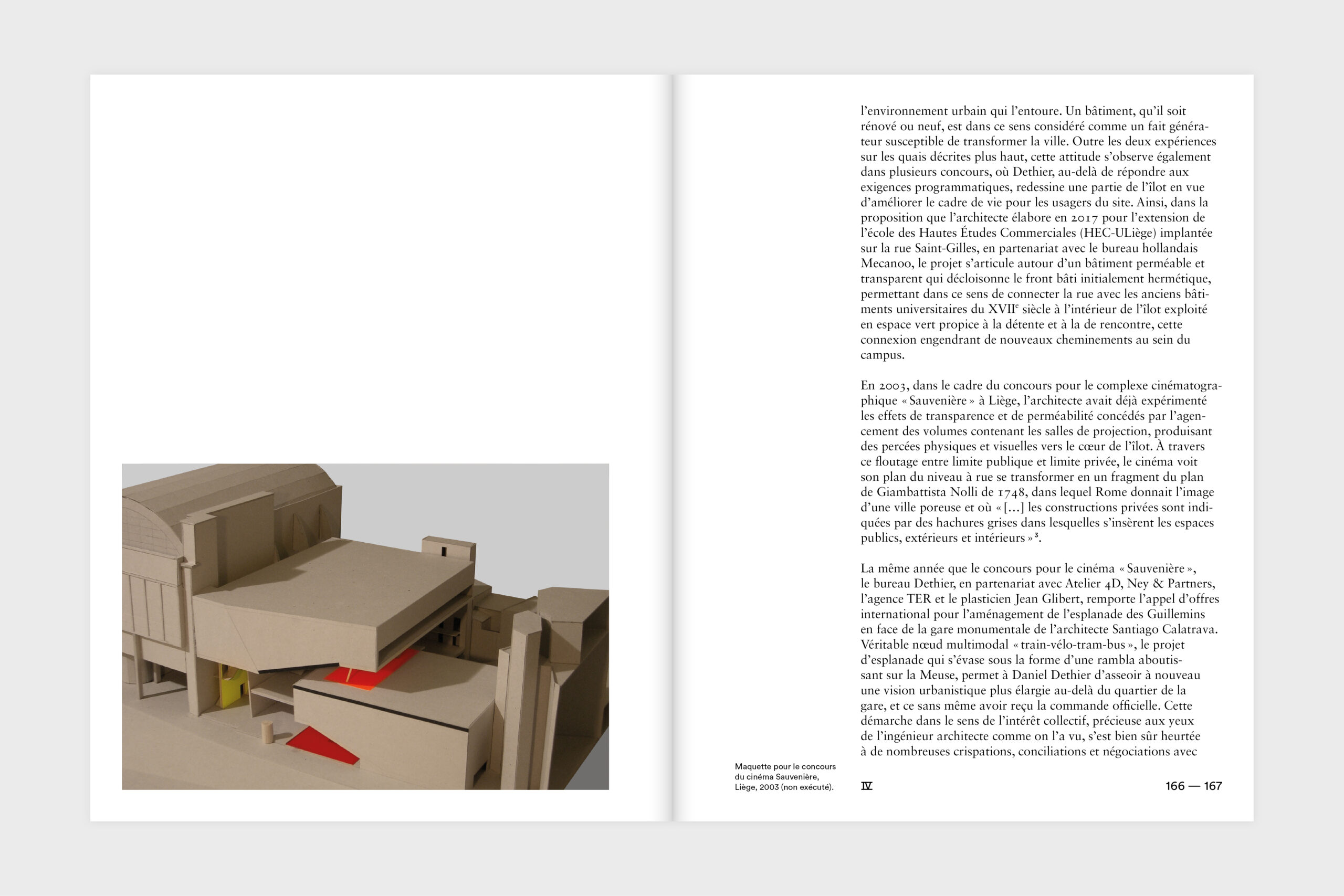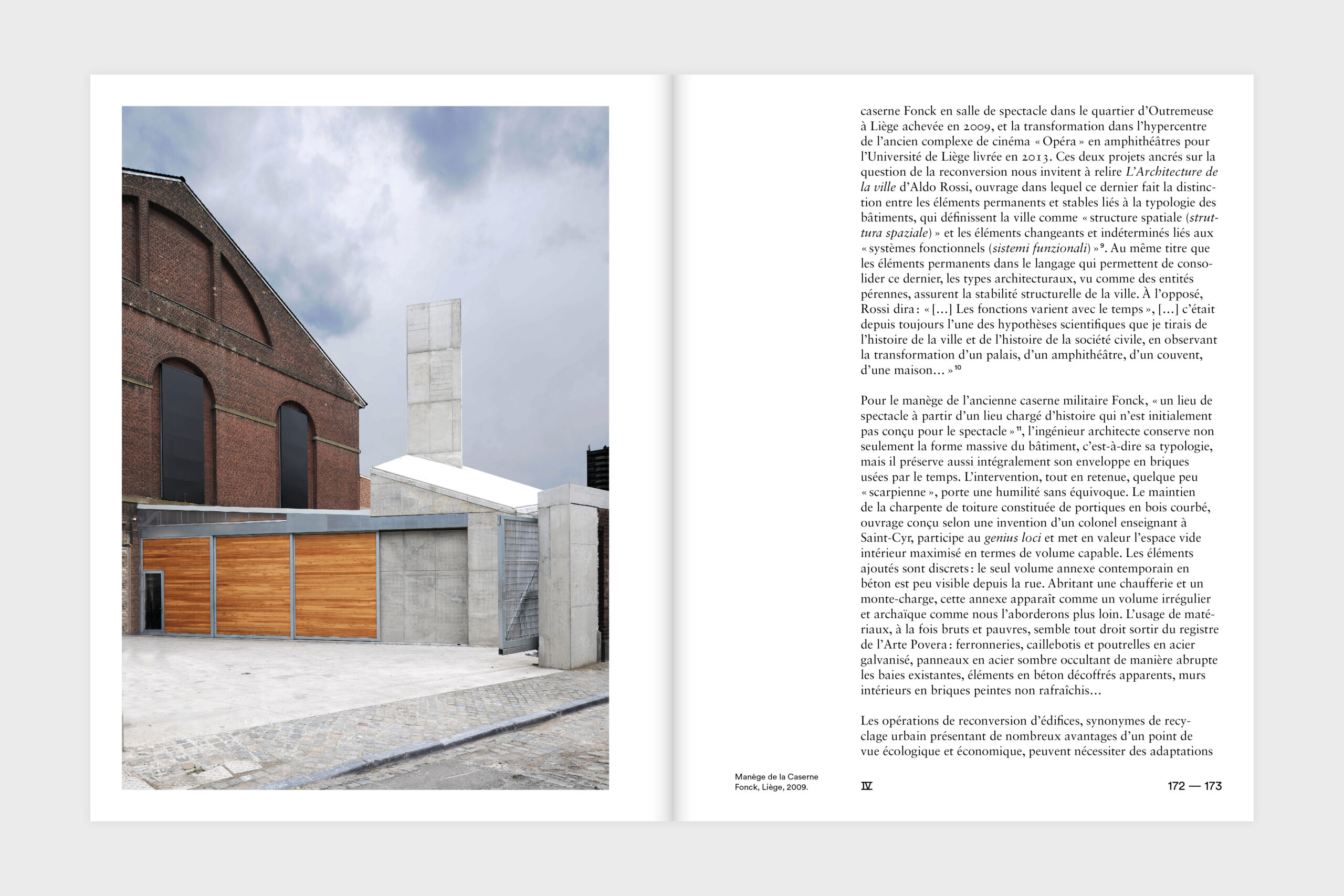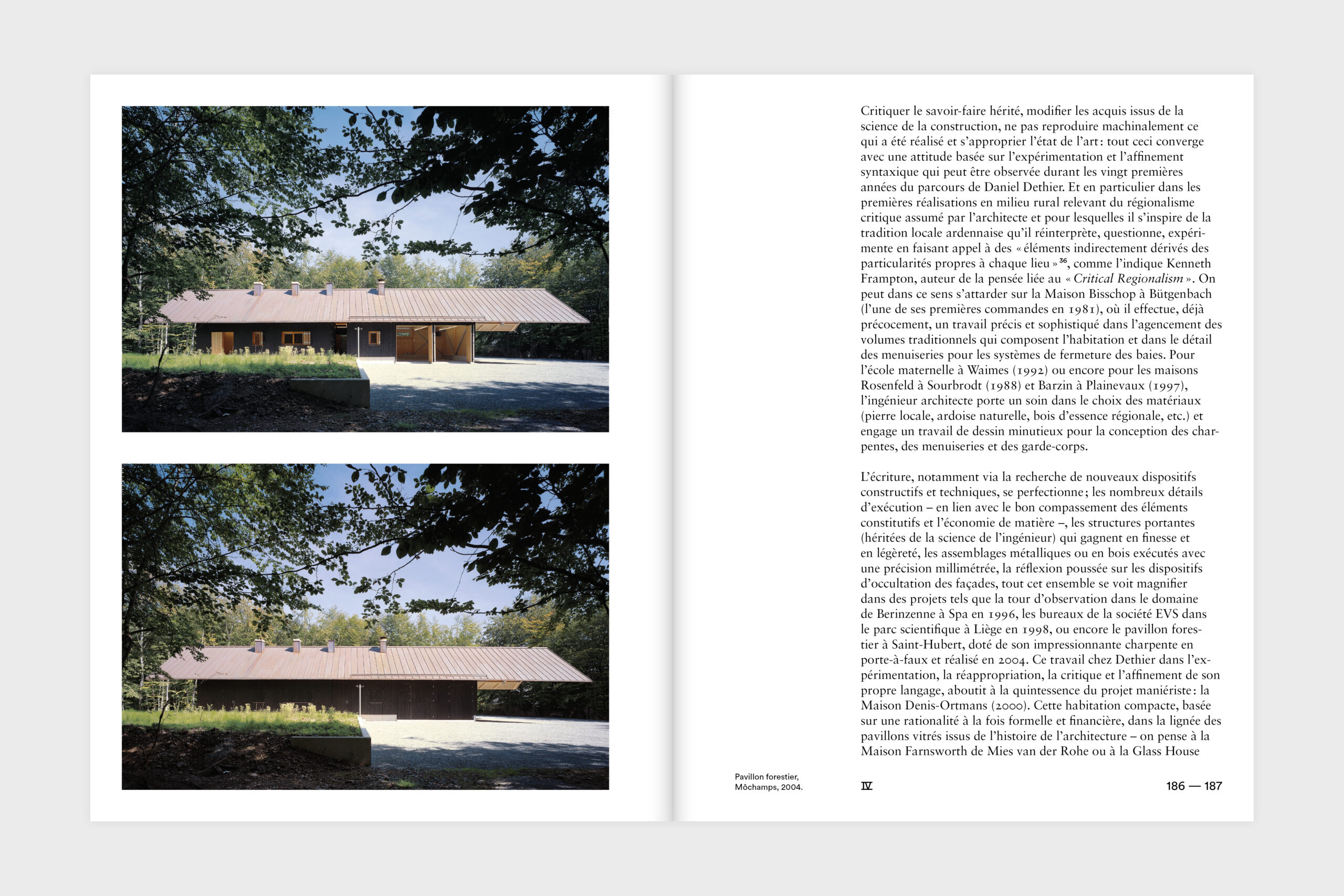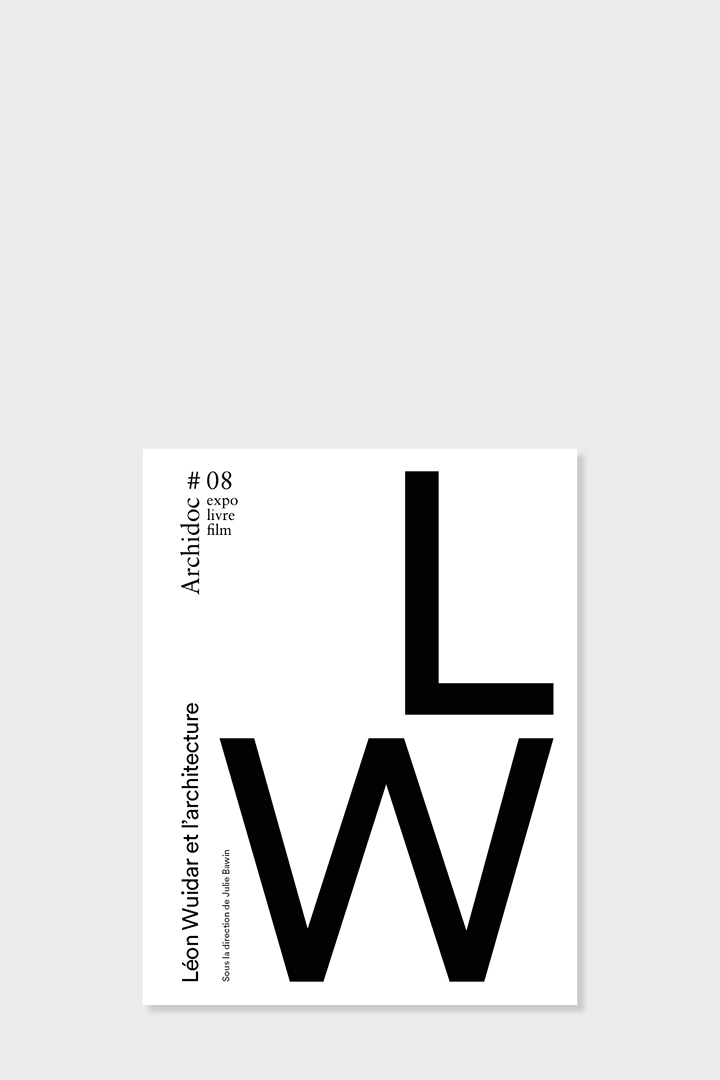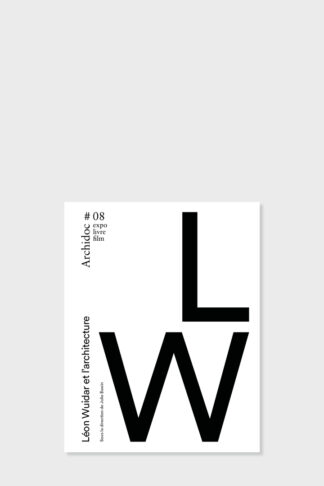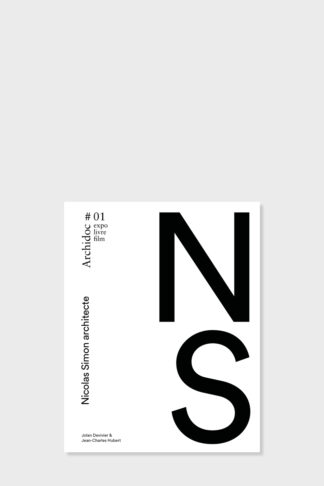Description
Born in Waimes in 1956, Daniel Dethier began his training as a civil engineer and architect at the University of Liège, graduating in 1979. It was at university that he discovered the work of René Greisch and Jean Englebert, whom he assisted from 1981 to 1988. In 1988, Daniel Dethier completed his training with a degree in urban planning.Based on humanistic and formal values, his approach to architecture is marked by the works of several international figures, including Oscar Niemeyer and Charlotte Perriand. Glenn Murcutt’s critical regionalism also had a profound influence on him.
Daniel Dethier’s work is evolving rapidly as a result of his research into a wide range of programmes. Since the 1990s, he has been involved in major projects involving both new constructions (Amphithéâtres de l’Europe, Liège, 1997; SPI+, Liège, 2001; Pouplin power station, Liège, 2003, etc.) and the repurposing of monuments (Palais du Val-Saint-Lambert, Seraing, 1996; Curtius and Brahy residences, Liège, 2001; Fonck barracks riding school, 2009; Eupen abattoirs, 2009). In terms of heritage restoration, Daniel Dethier also stands out for his subtle and accurate approach to modernist heritage, as demonstrated by the renovation of the Cité de Droixhe (2008) and the Brunfaut Tower (Brussels, work completed in 2024). In addition to a few special structures such as the towers in Berinzenne (1996), Gedinne (2001) and Koblenz (2011), two projects have contributed to his increased visibility: the offices of the EVS company (Liège, 1998) and the Maison Denis-Ortmans (Jehanster, 2000). The latter foreshadows the research carried out by the engineer-architect on the question of prefabrication, which led to the design of the HOSOMI system (Lemmerling House, 2007, housing complex in Les Petites Roches, Liège, 2020, Maison d’Outrewarche, 2024).
Like other major figures in Belgian and international architecture, Daniel Dethier establishes links between architecture and the arts. This cross-disciplinary and ‘generous’ approach to architecture is reflected in his collaborations with numerous artists, in particular Jean Glibert, who has been involved in around thirty projects. After graduating as an urban planner in 1986, Daniel Dethier designed several iconic public spaces, including the Esplanade des Guillemins, whose main features have gradually been undermined. He was also responsible for the lighting and greening of the Montagne de Bueren (1999). From 2005 to 2011, Daniel Dethier taught the Architecture Project course at the Polytechnic Faculty of the Free University of Brussels. He was also Director of the Arts Class and President of the Royal Academy of Sciences, Letters and Fine Arts of Belgium in 2019 and 2020.
Scientific director: Pierre Henrion
Authors: Rika Devos, Pierre Henrion, Norbert Nelles, Luan Nguyen
Paperback: 160 pages
Publisher: Groupe d’ateliers de recherche / École supérieure des Arts de la Ville de Liège (Research Workshop Group / Higher School of Arts of the City of Liège)
Date of publication: September 2025
Collection: Archidoc
Dimensions: 190 x 148 mm French style
Cover: 250 gsm paper – Offset – white
Printing: Front: four-colour process – Back: four-colour process
Inner pages: 115 gsm – Munken Polar – white
Printing: Front: four-colour process – Back: four-colour process
Print run: 750 copies

